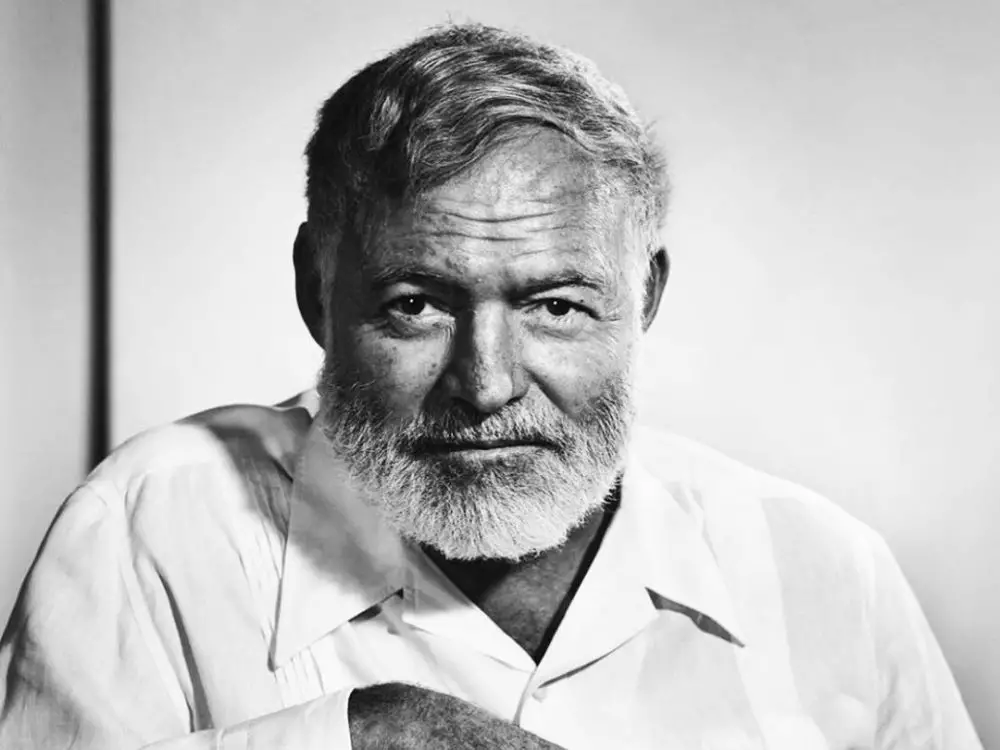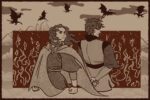Ernest Hemingway, considered by many to be one of the greatest American authors of the 20th Century, left behind a life story as compelling as anything he had ever written. While you are probably at least familiar with Hemingway’s most famous works, such as “A Farewell to Arms” (1929) or “For Whom the Bell Tolls” (1940), what you may not know are the personal experiences and struggles that inspired these great writings.
There is no way to fully do justice to the long and eventful life of Hemingway in such a short article. However, it is still possible to pick out certain aspects of his life and career that together will hopefully paint a clearer picture of who he was as a man and as a writer.
To that end, here are five highlights from the marvelously messy life of Ernest Miller Hemingway.
1. A Brave Soldier
While Hemingway technically never enlisted as a soldier, he went out of his way to have the experiences of one. In Word War I, after being rejected for military service due to a bad eye, Hemingway became an ambulance driver for the Red Cross. He was rewarded for his heroism on the Austro-Italian front, where he managed to carry a soldier to safety despite sustaining injuries from both a mortar shell and machine-gun fire.
Despite being seriously wounded, Hemingway was not turned off from war. He would go on to work as a correspondent during both the Spanish Civil War and the Japanese invasion of China and would also involve himself heavily in World War II.
Hemingway followed American troops into battle on D-Day and was there to witness both the Battle of the Bulge and the liberation of Paris. Even though he was only there as a journalist, he would be praised by the American soldiers for his courage in battle as well as his impressive knowledge of military matters.
Hemingway might not have met the entrance qualifications to become a soldier, but he would be damned if he let that stop him.
2. An Unfaithful Husband
Hemingway was a courageous man, but he was not without his faults. He was notoriously unfaithful to his spouses, repeating a pattern throughout his life where he would cheat on them and eventually leave them for another woman. All told, Hemingway was married four times: to Hadley Richardson in 1921, to Pauline Pfeiffer in 1927, to Martha Gellhorn in 1940 and to Mary Welsh in 1946.
Hemingway’s infidelity might have been influenced by his experience with Agnes von Kurowsky, a nurse for the Red Cross during WWI who took care of Hemingway while he was injured. Hemingway fell in love with Agnes and they decided to get married, but she eventually left him for someone else, writing him a letter of rejection.
Author Jeffrey Meyers argues in his biography of Hemingway that this incident led the famous American writer to develop a habit of rejecting women before they had a chance to do the same to him.
Although Hemingway liked to think he was a man in control of himself, he still frequently suffered from unchecked emotional issues, which unfortunately had a way of influencing his decisions.
3. A Daring Adventurer
Hemingway traveled widely, spending his years moving between a variety of different countries, including France, Cuba and Canada, in addition to the United States. As well as living the dangerous life of a war correspondent, he was also a noted big game hunter, making many trips to Africa throughout his lifetime. He also enjoyed skiing in the Alps and watching bullfights in Spain.
Hemingway’s penchant for adventure led to him taking more than a few scrapes. In Africa, he once got clawed while playing with a lion and, in an even more outrageous incident, survived two plane crashes in the space of 24 hours. He shot himself in the leg once while shooting at sharks in Cuba and in his travels he managed to contract an impressive number of illnesses, not the least of which were dysentery, malaria, pneumonia and anthrax.
To Hemingway, the risk just added to the reward, and he likely would have seen his many scars as proof he had lived his life well.
A Serious Writer
Hemingway took his craft seriously, and it showed in how he wrote. While working on “A Farewell to Arms,” he would begin by rereading the novel from the beginning and writing from where he left off, revising it quite a bit in the process. Moreover, Hemingway rewrote the ending to the book no less than 39 times, each time struggling to get the words exactly right.
Hemingway drew from his experiences in order to create his work, wishing to write only what was “true.” “A Farewell to Arms” was inspired by his service during WWI, for example, and “For Whom the Bell Tolls” came out of his time as a correspondent during the Spanish Civil War.
According to Hemingway, “A writer’s job is to tell the truth. His standard of fidelity to the truth should be so high that his invention, out of his experience, should produce a truer account than anything factual can be.”
Hemingway understood that a story could — and should— be true even when it is not actually true. As a result, his work continues to resonate with readers, who are able to sense the truth in his words even while they are aware that what they are reading is fictional.
A Deeply Troubled Man
Although he liked to portray himself as strong, confident and capable, Hemingway had a vulnerable side. He suffered from severe depression for much of his life, often going through particularly bad attacks which he called his “black dog days.” The wars he participated in also took their toll. In addition to his injuries, he went through many traumatic experiences, such as picking up human remains from a bombed-out factory in Italy, which would haunt him for as long as he lived. His personal life was not much easier; he lost his father to suicide, and his relationships with his wives and children alike were frequently turbulent.
Hemingway recognized that pain and suffering were inevitable, and believed that in order to survive, you needed to live by a certain set of principles. These principles, which became known as the “Hemingway code,” included courage, dignity, honor and endurance. Even though life may have been a losing battle, those who lived by the Hemingway code showed “grace under pressure,” which was in itself a kind of victory.
In the end, however, Hemingway himself may have proven he had set the standard too high. By 1960, his anxiety and depression had finally caught up with him. After receiving electroshock therapy treatments in the Mayo Clinic in Rochester, Minnesota, Hemingway finally ended his own life at the age of 61.
Hemingway did his best to live a life according to his code and, though he often failed, he nevertheless managed to achieve incredible things in his time. He was a soldier without ever being a soldier, a brave, far-traveling adventurer and, above all, a great writer who would forever be known for his contributions to American literature.
Like most of his written work, Hemingway’s life story was long, complex and filled with trials and suffering. But much like his work, it was also compelling, impressive, heartwarming and heartbreaking and, more than anything, human.
















